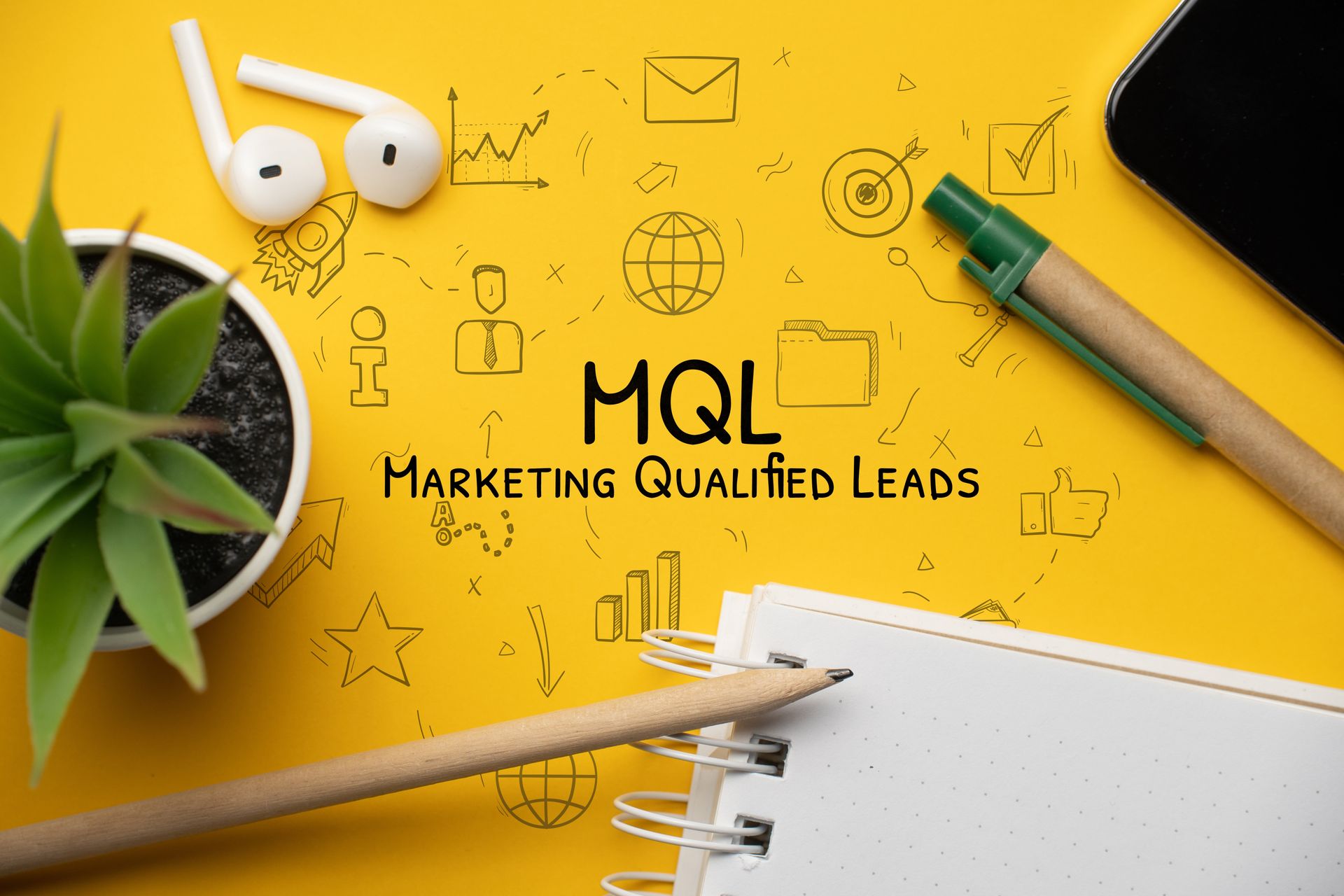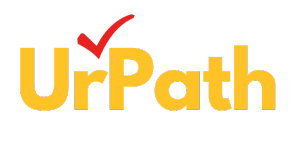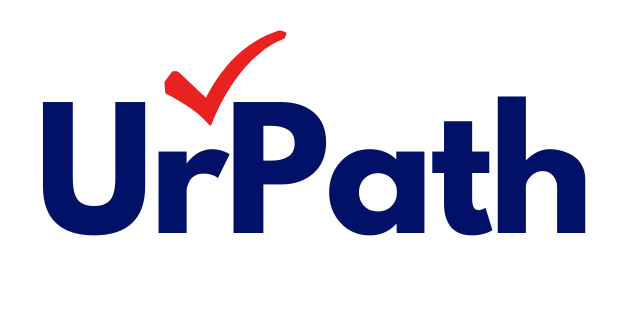Copy of News
WHAT'S NEW?

By Hayoung Kim
•
November 14, 2024
Unlock the full potential of webinars as a versatile tool in your B2B marketing strategy. From showcasing your product to launching and discussing new eBooks or whitepapers, sharing thought leadership insights, and highlighting customer success stories, webinars offer endless opportunities. Whether you’re looking to drive brand awareness, engage your target audience, or generate qualified leads, this step-by-step guide—based on my extensive experience—will help you create impactful and effective webinars that deliver results.

By Stephanie Wu
•
November 7, 2024
A successful omnichannel strategy requires careful planning and continuous optimization. Here are the key steps: 1. Evaluate and Define Goals Start by setting clear objectives that align with the institution's overarching goals, such as increasing inquiries, boosting application numbers, or driving enrollments. From my experience working at Google’s Growth Lab, I learned the importance of identifying a North Star Metric— a single, most critical indicator that best represents the success of the product or offering. Establish supporting KPIs to track performance along the way, ensuring that all activities contribute to the North Star Metric. Setting quarterly OKRs (Objectives and Key Results) and measuring progress against them provides a focused direction for the strategy and enables continuous alignment with institutional objectives. 2. Conduct Market and Competitor Research To build a truly effective omnichannel strategy, it’s essential to conduct thorough market and competitor research that goes beyond examining similarly ranked institutions. Start by evaluating competitor strategies and analyzing student expectations to identify unique opportunities and differentiators. Competitor research should be approached holistically—your competitors are not only institutions with a similar ranking or academic focus but also those offering unique engagement strategies or programs that attract your target demographics, even if their core offerings differ. Look closely at the marketing channels, messaging, and engagement tactics other institutions are using, whether they share your academic profile or not. For example, a specialized art school might learn valuable lessons from the digital engagement strategies of a large research university, or a liberal arts college might find innovative recruitment approaches from vocational schools. This broader perspective on competitors helps reveal gaps, new trends, and untapped channels that can be adapted to fit your institution’s goals. By understanding what others are doing and refining your strategy based on these insights, you can better position your institution to stand out and capture the attention of prospective students. 3. Select the Right Channels As emphasized earlier, use data-driven insights to identify the most effective channels for reaching specific student segments, optimizing both engagement and ROI. By analyzing data on student preferences and behaviors, institutions can make informed decisions on where to invest marketing resources for maximum impact. For example, prospective undergraduate students often engage more with visually rich, interactive platforms like Instagram, TikTok, and YouTube, which allow for immersive storytelling. In contrast, graduate or executive education students may be more responsive to LinkedIn and email campaigns, where professional content, career outcomes, and academic rigor are emphasized. Selecting the right channels involves continually assessing which platforms generate the highest engagement and conversion rates among target audiences. Analyzing metrics such as click-through rates, time spent on content, and conversion paths across channels enables institutions to prioritize investments in high-performing platforms. This approach ensures each marketing dollar is allocated to channels that align best with each segment’s preferences, ultimately driving stronger engagement, more completed applications, and a higher return on investment. 4. Invest in Technology and Training Providing recruitment teams with advanced tools and proper training is crucial for a streamlined and effective recruitment process. Start by equipping them with CRM systems to manage relationships and track interactions with prospective students. These systems allow recruitment teams to capture valuable data, follow up efficiently, and maintain personalized communication with leads throughout their journey. Analytics platforms are another essential investment, offering insights into the effectiveness of campaigns, understanding student behaviors, and identifying the best channels for outreach. With data-driven insights, recruitment teams can make informed decisions, targeting the right students and optimizing their strategies over time. Marketing automation tools further enhance efficiency by automating repetitive tasks, such as sending emails, segmenting leads, and scheduling follow-ups. This frees up time for recruitment teams to focus on personalized outreach and engagement strategies that build stronger connections with prospective students. Equally important is training staff to use these technologies effectively. Ensuring they understand how to leverage each tool to its fullest potential will lead to seamless execution of campaigns, better data management, and ultimately, higher conversion rates. When teams are both well-equipped and well-trained, they can work more efficiently and effectively, enhancing the overall success of recruitment efforts. 5. Continuously Optimize To maximize the effectiveness of recruitment efforts, it’s essential to regularly evaluate and adjust campaign performance across all channels. Continuous optimization involves analyzing data from each channel—whether it’s email marketing, social media, search ads, or events—to understand what’s working and what isn’t. By regularly assessing metrics like engagement rates, conversion rates, and cost-per-lead, recruitment teams can identify trends, pinpoint areas for improvement, and make data-driven decisions. This iterative process is crucial for refining the messaging, channel selection, and targeting to ensure every interaction resonates with the intended audience. For example, if data shows that certain messages resonate more on social media than email, teams can adjust their approach by focusing on that channel for similar campaigns. Likewise, if one segment of the audience responds well to specific content, such as testimonials or career outcome data, this can guide future content strategies. Continuous optimization is especially critical for improving ROI and ensuring efficient use of the marketing budget. By analyzing which channels yield the best results for the lowest cost, recruitment teams can allocate more resources to high-performing channels while reducing spend on those that aren’t delivering. This approach prevents wasting marketing dollars on ineffective channels and strategies, instead focusing on areas that maximize return. Ultimately, continuous optimization ensures the omnichannel strategy remains relevant and aligned with evolving student behaviors, enabling the recruitment team to consistently reach their goals while maintaining a strong ROI. This disciplined approach not only keeps campaigns efficient but also sustains engagement, strengthens connections with prospective students, and maximizes the value of every marketing dollar spent.

By Hayoung Kim
•
November 4, 2024
In today’s competitive landscape, higher education institutions must adopt a strategic, student-focused approach to recruitment to stand out. Leaders like presidents, chancellors, and recruitment directors face growing pressure to boost enrollment and diversify student demographics. An omnichannel marketing strategy—integrating online and offline engagement channels—is essential for guiding prospective students from awareness to enrollment. In this article, we explore how institutions can leverage omnichannel marketing to achieve recruitment success, highlighting key components and actionable strategies to enhance results.

By Stephanie Wu
•
October 29, 2024
Introduction While generating Marketing Qualified Leads (MQLs) is crucial, it’s only the beginning of the sales journey. To achieve organizational success, it’s essential to nurture leads further down the funnel. This blog will discuss the importance of transitioning MQLs into Sales Qualified Leads (SQLs) and ultimately Sales Accepted Leads (SALs) through effective lead nurturing strategies and Service Level Agreements (SLAs). From MQL to SQL: Qualifying Leads for Sales Once a lead meets the scoring criteria for an MQL, sales development teams evaluate their potential to become SQLs. SQLs demonstrate stronger purchase intent and meet specific criteria that make them high-priority targets for sales efforts. Qualifying SQLs Discovery Calls : In-depth conversations to understand the lead’s needs, pain points, and timeline for purchasing. Assessing Budget, Authority, Need, and Timeline (BANT) : This qualification framework helps sales teams determine if the SQL has the necessary budget, decision-making authority, specific needs that your product addresses, and a reasonable purchase timeline. To Call or to Email: The MQL Dilemma One of the perennial questions in sales development is whether to prioritize calls or emails when reaching out to Marketing Qualified Leads (MQLs). The answer isn't always straightforward and often depends on various factors, including: Lead Quality : Higher-quality MQLs, often indicated by strong engagement metrics or ideal customer profile (ICP) fit, may warrant a more immediate, personalized approach like a phone call. Lead Preference: Some leads may prefer email communication, while others may be more receptive to a phone call or LinkedIn InMail message. Sales Team Capacity : If your sales team is overwhelmed, prioritizing email outreach can be a more efficient way to engage with a larger number of leads. Who Writes the Emails? While sales development representatives (SDRs) are typically responsible for executing outreach, the creation of effective email templates is often a collaborative effort between marketing and sales. Marketing can provide the initial framework, ensuring brand consistency and messaging alignment, while sales can offer insights into what resonates with prospects and personalize the message for each MQL. CRMs for Efficient MQL Management A robust CRM is essential for managing MQLs effectively. Here are a few popular options: HubSpot : A comprehensive CRM platform that offers features like lead scoring, email marketing, and sales automation. Salesforce : A powerful CRM solution that can be customized to meet specific business needs. Pipedrive : A user-friendly CRM that focuses on sales pipeline management and deal closure. By carefully considering these factors and leveraging the right tools, sales development teams can optimize their MQL outreach strategies and drive revenue growth. Transitioning to SAL Successful discovery calls result in the lead being classified as a Sales-Accepted Lead (SAL). At this stage, the lead is passed from the sales development representative to a more senior account executive, who reaches out to the SAL through various channels like email, phone, or social media to nurture the relationship and hopefully close the deal. If the SAL is successfully converted into a customer, the sales process is complete. By using the SAL process, companies can improve their sales efficiency and focus on the most promising leads, increasing their chances of closing deals. The Role of SLAs In Revenue Growth A service level agreement (SLA) between marketing and sales is a formal agreement outlining expectations, goals, responsibilities, and performance metrics for both teams. It ensures alignment, accountability, and transparency. Key components of a marketing-sales SLA often include: Lead Generation and Qualification: Marketing's Commitment: Deliver a specific number of qualified leads per month or quarter. Ensure lead quality by adhering to a defined lead scoring model. Provide accurate and up-to-date lead information, including contact details, company information, and engagement history. Sales' Commitment: Contact all qualified leads within a specified timeframe. Provide feedback on lead quality and conversion rates to the marketing team. Update the CRM system with accurate and timely information on lead interactions and outcomes. Lead Handoff and Follow-up: Marketing's Commitment: Provide clear and concise lead handoff documentation, including lead source, qualification criteria, and relevant marketing materials. Schedule regular meetings with the sales team to discuss lead quality, pipeline health, and any issues. Sales' Commitment: Acknowledge receipt of leads within a specified timeframe. Follow up with leads consistently and persistently, adhering to the established sales process. Provide regular updates on lead progress and pipeline forecasts. Data Sharing and Reporting: Marketing's Commitment: Provide timely access to marketing analytics and reports to the sales team. Share insights on customer behavior, market trends, and competitor activity. Sales' Commitment: Share sales activity data, including call logs, email correspondence, and meeting notes, with the marketing team. Provide feedback on the effectiveness of marketing campaigns and lead generation efforts. Performance Metrics: Key Performance Indicators (KPIs): Number of qualified leads generated per month Lead conversion rate Average deal size Sales cycle length Customer acquisition cost Regular Review and Adjustments: Both teams will meet regularly to review performance metrics, identify areas for improvement, and make necessary adjustments to the SLA. By establishing a clear and measurable SLA, marketing and sales teams can align their efforts, improve efficiency, and ultimately drive revenue growth. Benefits of SLAs Bridging the Gap: SLAs prevent conflicts and misalignment by defining lead handoff criteria and quality standards. Setting Measurable Goals: Clear benchmarks for both marketing and sales teams. Feedback Loop: Continuous improvement through feedback on lead quality. Personal Experience: When SLAs Fail Without leadership enforcement and a shared vision, even well-designed SLAs can be ineffective. In my experience, organizations that prioritized individual targets over collaboration often struggled to meet pipeline goals. Focusing on the North Star Metric: Pipeline Ultimately, organizational success depends on a healthy and growing pipeline. By optimizing your funnel through effective lead nurturing and clear SLAs, you can achieve your pipeline targets and drive revenue growth. Conclusion Nurturing leads through the funnel is critical for any company or higher education institution. By effectively qualifying leads, transitioning them to SQLs and SALs, and implementing strong SLAs, organizations can maximize their marketing and sales efforts and achieve their revenue goals. Reach out to UrPath to learn how we can help you optimize your funnel.

By Hayoung Kim
•
October 24, 2024
Discover the essential steps to building a strong MQL model that aligns your marketing and sales efforts. In this blog, we break down how to define your Ideal Customer Profiles (ICPs), establish effective MQL criteria, and build a lead scoring model that prioritizes high-potential leads. Learn how integrating the right technology and continually refining your approach can drive higher conversion rates and boost your ROI. Perfect for businesses looking to enhance their lead generation strategy, attract quality leads, and stay ahead in a competitive market.

By Stephanie Wu
•
October 21, 2024
Orchestrating B2B campaigns that are truly integrated is challenging for any organization of any size. To create integrated enterprise campaigns, the key is to align all marketing activities across various channels and teams into a cohesive strategy. Here's a summary of the process based on a playbook I've developed over the years from working at Google, Coursera, and Udemy. Why Plan Integrated Campaigns? Integrated campaigns offer a structured approach to marketing, ensuring consistency and efficiency. They help clarify goals, align teams, and improve coordination across different channels. This process maximizes campaign reach and demonstrates how marketing contributes to the sales pipeline and revenue. Framework for Integrated Campaigns The campaign strategy ties together top-level business objectives with specific marketing initiatives. Underneath the campaign are individual programs targeting specific audiences with tailored messaging. These programs include offers like webinars, e-books, and trade shows to engage prospects at various stages of the funnel—from awareness to conversion. The Campaign Process Plan : Identify campaign objectives and the business problems being solved. Develop a unified campaign theme and messaging journey. It’s essential to orchestrate a clear user journey through the funnel and outline content, roadmaps, and key regions. Launch : Coordinate a multi-channel omnipresent launch. Internally, synchronize stakeholders, and externally, ensure consistent messaging across all channels—social media, emails, webinars, etc. Sustain : Continue campaign momentum by using follow-up tactics like webinars, email nurtures, and retargeting efforts. Keep the audience engaged over weeks or months. Wrap-up and Report : Conduct a post-mortem analysis by gathering feedback from stakeholders, identifying areas of improvement, and analyzing key metrics like pipeline impact, ROI, and campaign attribution. Funnel Stages and Tactics It’s critical to create content and activities that aligned with the following three funnel stages: Top of Funnel (Awareness): Generate leads through paid media, PR, and content such as e-books and social posts. Middle of Funnel (Research) : Nurture leads with webinars, case studies, and targeted ABM strategies. Bottom of Funnel (Consideration) : Focus on converting leads into sales through SDR outreach, personalized offers, and customer engagement. Stakeholder Involvement and Tools Effective campaigns require clear roles and responsibilities across teams. Tools like Salesforce and Marketo are used to monitor performance, manage leads, and attribute marketing activities to business outcomes. Weekly updates and campaign dashboards help ensure alignment across teams and regions. By following this structured approach, companies can create scalable and effective marketing campaigns that drive measurable results. Stay tuned for a future blog post about building a strong lead scoring model. Contact Us to Elevate Your Marketing Strategy Please email us at info@urpath.org to explore how we can help your team achieve your marketing goals.

By Stephanie Wu
•
October 17, 2024
Artificial Intelligence (AI) is rapidly transforming various sectors, and higher education is no exception. By leveraging AI tools and technologies, institutions can enhance teaching, learning, and administrative processes. Here's a guide to help higher education institutions effectively integrate AI into their practices: 1. Identify Areas for AI Implementation Personalized Learning: Tailor educational experiences to individual student needs, preferences, and learning styles. Intelligent Tutoring Systems: Provide students with personalized feedback, guidance, and support. Administrative Efficiency: Automate tasks like grading, enrollment management, and resource allocation. Research and Innovation: Use AI to analyze large datasets, identify trends, and accelerate research projects. 2. Assess AI Tools and Technologies Evaluate Existing Tools: Identify AI-powered tools that align with your institution's goals and resources. Consider Customization: Explore options for customizing AI tools to meet specific needs and workflows. Prioritize Scalability: Choose tools that can handle increasing workloads and accommodate future growth. 3. Develop a Strategic Plan Define Objectives: Clearly articulate the desired outcomes of AI implementation. Identify Key Stakeholders: Involve faculty, staff, students, and administrators in the planning process. Allocate Resources: Ensure adequate funding, technical support, and training for AI initiatives. Establish Governance: Create a framework for overseeing AI implementation and addressing ethical concerns. 4. Provide Faculty Training Offer Workshops and Training Sessions: Equip faculty with the skills to effectively use AI tools in their teaching. Foster Collaboration: Encourage faculty to share best practices and collaborate on AI projects. Support Professional Development: Provide opportunities for faculty to stay up-to-date on AI advancements. 5. Address Ethical Considerations Data Privacy and Security: Implement robust measures to protect student data. Bias and Fairness: Ensure AI algorithms are unbiased and do not perpetuate discrimination. Transparency and Accountability: Be transparent about AI usage and establish accountability mechanisms. 6. Pilot and Evaluate AI Initiatives Start Small: Begin with pilot projects to test the effectiveness of AI tools in specific courses or departments. Gather Feedback: Collect input from faculty, students, and staff to assess the impact of AI initiatives. Iterate and Improve: Continuously refine and improve AI implementations based on evaluation results. 7. Integrate AI into Curriculum Develop AI-Related Courses: Offer courses on AI fundamentals, ethics, and applications. Infuse AI into Existing Courses: Incorporate AI concepts and tools into relevant courses across disciplines. Prepare Students for the Future : Equip students with the skills to thrive in an AI-driven world. 8. Conduct Regular Evaluations and Adjustments: Quarterly Check-ins: Conduct quarterly visits to assess the performance of AI integration among students and faculty. Gather Comprehensive Feedback: Collect feedback from a diverse range of stakeholders, including students, faculty, and staff. Evaluate Effectiveness: Assess the impact of AI on student outcomes, teaching effectiveness, and administrative efficiency. Make Data-Driven Decisions: Use feedback and evaluation data to inform decisions about continuing, modifying, or expanding AI initiatives. Calculate ROI: Regularly calculate the return on investment (ROI) to ensure that AI initiatives align with institutional goals and financial sustainability. By following these steps, higher education institutions can effectively integrate AI into their teaching and learning practices, enhancing student outcomes, improving operational efficiency, and fostering innovation.

By Hayoung Kim
•
September 30, 2024
As we move deeper into the 21st century, the pressures on higher education institutions to innovate and adapt have reached unprecedented levels. With rapid advancements in technology, particularly artificial intelligence (AI), these institutions must embrace new tools to remain competitive, ensure student success, and stay relevant in an ever-evolving job market. This article examines why AI integration is critical for higher education, the tangible benefits of adopting AI-driven technologies, and how various tools are revolutionizing student success and job readiness. AI Integration: A Game Changer for Higher Education Institutions 1. Transforming Institutional Operations Through AI AI technologies can streamline operations within higher education institutions by automating repetitive tasks, analyzing vast data sets, and optimizing resources. Tools powered by AI can manage everything from student enrollment processes to financial aid distributions, freeing up administrative staff to focus on more complex tasks. AI algorithms can predict patterns in student behavior, helping institutions allocate resources more effectively to address potential challenges, such as high dropout rates or academic underperformance. For instance, AI-powered predictive analytics can forecast when a student is at risk of dropping out based on behavioral patterns, attendance, and academic performance. Early intervention strategies, tailored specifically to each student's needs, can then be implemented. By enhancing institutional efficiency, AI ensures that education providers can focus more on delivering high-quality teaching and less on logistical burdens. 2. Revolutionizing Teaching and Learning Methods AI’s ability to personalize learning environments is perhaps its most transformative contribution. Traditionally, higher education has relied on a "one-size-fits-all" approach, with standardized curricula and teaching methods. However, AI can enable individualized learning plans for students by assessing each student’s strengths, weaknesses, and preferred learning methods. AI-powered platforms can adjust coursework in real time, ensuring students are constantly challenged but not overwhelmed. For example, AI-driven tutoring systems can adapt learning content based on a student’s progress, offering additional resources or alternative explanations for difficult concepts. Moreover, AI can assist faculty by automating grading processes and assessing student performance more effectively. This allows educators to focus on teaching and mentoring, creating a more supportive and enriched learning environment. 3. Data-Driven Decision-Making for Institutional Success Higher education institutions generate massive amounts of data daily. However, without the ability to analyze and make sense of this data, much of its value is lost. AI can help institutions sift through these data sets, uncovering patterns and trends that would otherwise go unnoticed. AI algorithms can provide insights on how students engage with various academic programs, identify which programs are in demand, and highlight where resources should be invested. With these insights, decision-makers can fine-tune their academic offerings, ensuring that they remain relevant to the needs of students and the workforce. By leveraging AI’s data analytics capabilities, institutions can future-proof themselves, adapting swiftly to changes in student demand, technological advancements, and labor market needs. 4. Maximizing Students' Return on Investment (ROI) Through Career Success A significant concern for students is ensuring that their education translates into meaningful employment opportunities. AI is now playing a crucial role in supporting students with job applications, helping them stand out in a highly competitive job market. By analyzing job descriptions, optimizing resumes, and matching students with relevant positions, AI-driven tools are streamlining the path from education to employment. Many tools assist students in the job application process by providing personalized skill assessments and optimizing application materials tailored to specific job roles. These platforms help students effectively highlight their strengths and qualifications, increasing their chances of securing employment. As a result, higher education institutions benefit by supporting their graduates in maximizing the ROI on their tuition investment. Institutions that integrate such tools into their career services will not only enhance student satisfaction but also improve their overall employment statistics, strengthening their reputation in the competitive education landscape. If you're interested in learning more about how these tools can benefit your institution, please feel free to reach out to us. Surviving and Thriving in the 21st Century: AI as a Competitive Differentiator 1. The Need to Innovate in a Global Education Market The higher education landscape is more competitive than ever before. Institutions face competition not only from other universities but also from alternative learning platforms such as coding boot camps and online education providers. To remain attractive to prospective students, institutions must offer more than just traditional degree programs—they must also provide cutting-edge, AI-driven learning experiences. AI can differentiate institutions by offering AI-powered degree programs, innovative teaching methods, and personalized career counseling services. By integrating AI into their infrastructure, institutions position themselves as leaders in innovation, attracting students who value technological proficiency as part of their education. 2. Addressing the Global Demand for Talent The job market is undergoing a significant shift, with automation and AI technologies reshaping industries. The skills required to thrive in this market are constantly evolving. Institutions that incorporate AI into their curricula are better equipped to prepare students for future job roles, many of which have yet to be defined. This proactive approach ensures that graduates are not only prepared for the current job market but are also equipped with the adaptive learning skills required for lifelong career success. Preparing Students for an AI-Driven Workforce 1. Teaching the Skills of Tomorrow The integration of AI into higher education doesn’t stop at institutional operations. Students must also learn to navigate and work alongside AI technologies in their future careers. As AI reshapes industries from healthcare to finance, the demand for professionals who understand how to leverage AI tools will continue to grow. Institutions that teach students AI literacy—from data analysis to machine learning—ensure their graduates remain competitive in a technology-driven workforce. 2. Building Critical Thinking and Adaptability While AI will automate many tasks, soft skills such as creativity, problem-solving, and critical thinking will become even more valuable in the workforce. Institutions must strike a balance by teaching students how to use AI technologies while also fostering the human skills that AI cannot replicate. By doing so, they prepare students for a future in which human-AI collaboration is the norm. 3. Lifelong Learning and Professional Growth The integration of AI into higher education ensures that students are prepared not just for their first job, but for a lifetime of career growth. AI-powered platforms provide continuous learning opportunities and career support, enabling students to stay competitive in a rapidly evolving job market. As new technologies emerge, AI systems can guide graduates toward acquiring the necessary skills and certifications to remain relevant in their chosen fields. Conclusion: AI is the Future of Higher Education The integration of AI into higher education is no longer a futuristic ideal; it is a present-day necessity. Institutions that fail to embrace AI will find themselves falling behind in a world where technology drives everything from student success to institutional efficiency. AI offers unparalleled opportunities to streamline operations, personalize learning, and, most importantly, equip students with the skills and tools they need to thrive in an ever-changing job market. AI-driven platforms are transforming the way students approach job applications, helping them maximize the value of their education by accelerating their path to meaningful employment. The future of education is AI-driven, and those who embrace this technology now will be the ones shaping that future for generations to come.
UPCOMING EVENTS
February 2025
Mon
Tue
Wed
Thu
Fri
Sat
Sun
27
28
29
30
31
1
2
3
4
5
6
7
8
9
10
11
12
13
14
15
16
17
18
19
20
21
22
23
24
25
26
27
28
1
2
CONTACT US
info@urpath.org
68 Harrison Ave
Ste 605 PMB #991996
Boston, MA, 02111
+1 (508) 283-8699
ABOUT
SERVICES
JOIN OUR NEWSLETTER
Contact Us
Thank you for signing up to receive our newsletter. You will receive it when we have announcements to make!
Oops, there was an error sending your message.
Please try again later.
Please try again later.

© 2025
All Rights Reserved | UrPath LLC


